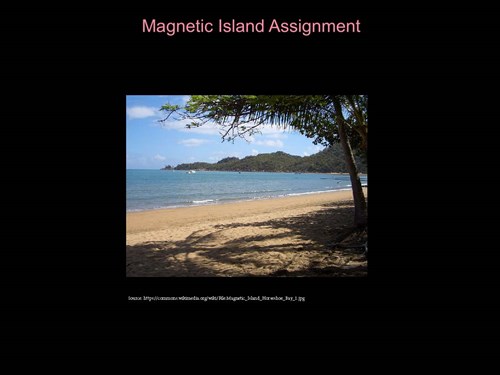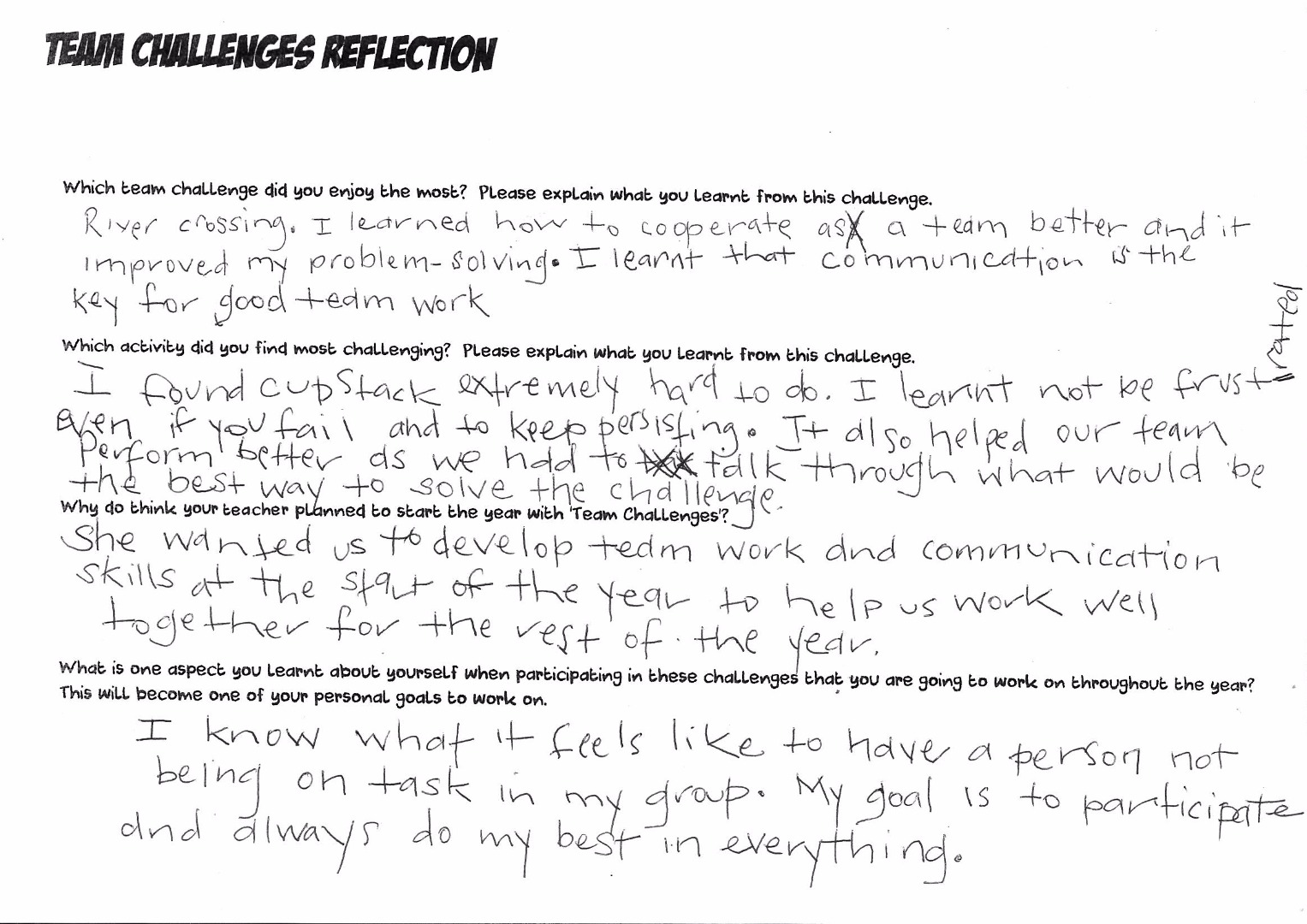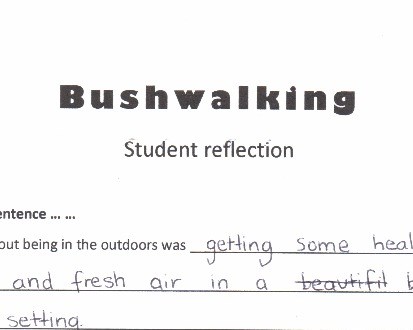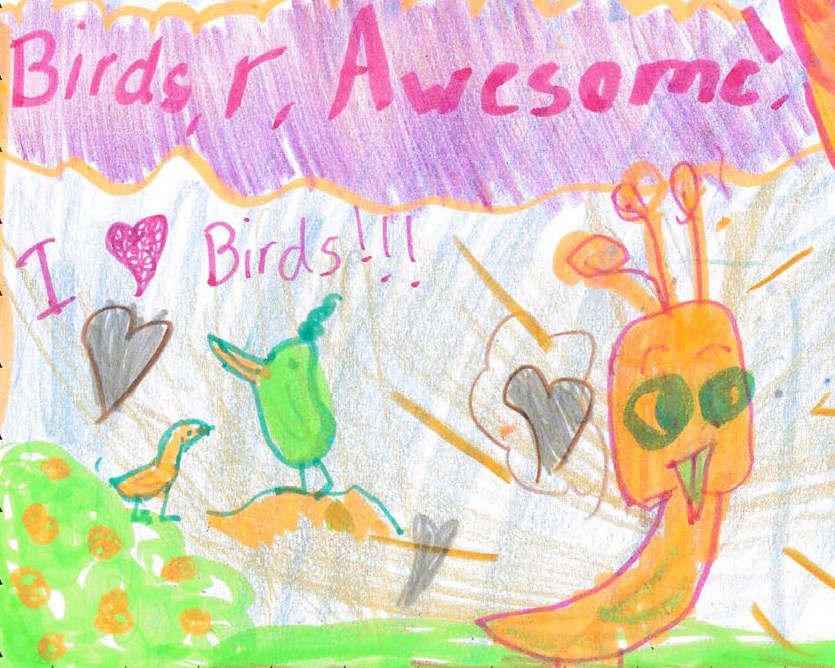Outdoor learning
Introduction
The outdoor learning connection provides a framework for students to experience guided, integrated learning across the curriculum in natural environments. Students have the opportunity to gain unique and specific benefits from outdoor learning. They develop skills and understandings while valuing a positive relationship with natural environments and promoting the sustainable use of these environments.
This connection presents four dimensions, which have been developed in consultation with Outdoor Education Australia. Content related to outdoor learning in the Australian Curriculum can be delivered in a range of ways; some of these are outlined under models of delivery.
The following pages show how content from the Australian Curriculum: Health and Physical Education, Humanities and Social Sciences, Geography, Science, general capabilities and cross-curriculum priorities can be organised and delivered through learning in the outdoors (F–6) and outdoor education (7–10).
Links are also provided to relevant student work samples which illustrate student learning in relation to achievement standards.
ACARA respectfully acknowledges the Traditional Custodians of the land, their Elders past and present, for the important and enduring role that Aboriginal and Torres Strait Islander peoples play in Australia. In particular, ACARA respectfully acknowledges the important and enduring role of Aboriginal and Torres Strait Islander peoples and their cultures in regard to the land, water and sky used for learning in the outdoors.
Children & Nature Network 2016, Green Schoolyards for Healthy Communities: Building a national movement for green schoolyards in every community, USA. Available from: http://www.childrenandnature.org/wp-content/uploads/2015/03/CNN_GSY_Report2016_Final.pdf
Children & Nature Network 2017, Green Schoolyards: Partnerships and pilot programs. http://www.childrenandnature.org/initiatives/schoolyards/
Children & Nature Network (various dates), Research and Studies, volumes i–vi.
Volume iii, September 2008. Available from: https://issuu.com/childrenandnature/docs/cnnrsrchvol_03
Volume iv, September 2009. Available from: https://issuu.com/childrenandnature/docs/cnnrsrchvol_04
Dickson, TJ, Gray, T & Mann, K for the Outdoor Council of Australia 2008, Australian Outdoor Adventure Activity Benefits Catalogue, University of Canberra.
https://www.academia.edu/8370828/Dickson_T._Gray_T._and_Mann_K_2008_._Australian_Outdoor_Adventure_Activity_Benefits_Catalogue_http_outdoorcouncil.asn.au_doc_OutdoorActivityBenefitsCatalogueFinal270808.pdf
Froude, C and Polley, S 2011, Outdoor Education: Foundations for tertiary and senior secondary education, 2nd edn, Impact Publishing, Cottesloe, WA.
Gray, T 2012, ‘Vitamin N: The missing ingredient in the 21st century curriculum’ in 21st Century Learning blog, 15 July 2012, Western Sydney University.
http://learning21c.wordpress.com/2012/07/15/vitamin-n-the-missing-ingredient-in-the-21st-century-curriculum/
Gray, T 2013, ‘Overcoming ecophobia’, Wildlife Australia, Summer 2013, pp. 42–44. https://www.academia.edu/5471946/Overcoming_Ecophobia_December_2013
Gray, T 2015, ‘Anaesthetized by screen or energized by green?’ in 21st Century Learning blog, 4 August 2015, Western Sydney University.
https://learning21c.wordpress.com/2015/08/04/anaesthetized-by-screen-or-energized-by-green/
Gray, T & Martin, P 2012, ‘The role and place of outdoor education in the Australian National Curriculum’, Australian Journal of Outdoor Education, vol. 16, no. 1, pp. 39–50.
Kellert, S 2013, ‘Children, nature and the future of our species’, in 21st Century Learning blog, 8 April 2013, Western Sydney University.
http://learning21c.wordpress.com/2013/04/08/children-nature-and-the-future-of-our-species/
Malone, K & Waite, S 2016, Student Outcomes and Natural Schooling, Plymouth University, Plymouth, UK. Available online: http://www.plymouth.ac.uk/research/oelres-net
Planet Ark 2014, National Tree Day: Health benefits. http://treeday.planetark.org/about/health-benefits.cfm
Townsend M & Weerasuriya R 2010, Beyond Blue to Green: The benefits of contact with nature for mental health and well-being, Beyond Blue Limited, Melbourne. Available from: https://www.deakin.edu.au/__data/assets/pdf_file/0004/310747/Beyond-Blue-To-Green-Literature-Review.pdf
MacGibbon, A 2010, ‘Children respond to call of the wild’, May 10 2010, Sydney Morning Herald. Available at:
http://www.smh.com.au/national/education/children-respond-to-call-of-the-wild-20100509-ulqv.html
NSW Department of Education – Learning Systems, Engaging children in nature: interviews with Richard Louv (5-part series)
http://www.youtube.com/watch?v=XJRQRDNliNE&list=PL4OaBCdO34bCqGmYtAskZqtvi0uMuYnef
The Wild Network, Project Wild Thing






